Editor’s note: This post is the result of an arms length collaboration with Indigenous Tourism BC. It was not reviewed or edited by our partners in travel before publication.
— By Don Enright
I’ve had an unforgettable year, travel-wise. I spent seven months in the South Pacific and Asia, and I photographed traditional performers wherever I travelled.
But it recently occurs to me that after 51 years in this country, I’ve never tried to pay visual tribute to aboriginal culture here. And so, along with photographer Tom Ediger, I make my way across the Strait of Georgia, or the Salish Sea, as it’s increasingly known, to B.C.’s capital, for Victoria’s 2015 Aboriginal Cultural Festival.
I’m not quite sure what to expect. It’s a busy Saturday, and thousands of people are strolling the inner harbour. This is the Victoria I remember: buskers, bagpipes, buses and immense hoards of tourists. But through the bustle and noise, I make out the sounds of drumming, and I head over to the courtyard of the Royal B.C. Museum, where the action is getting started.
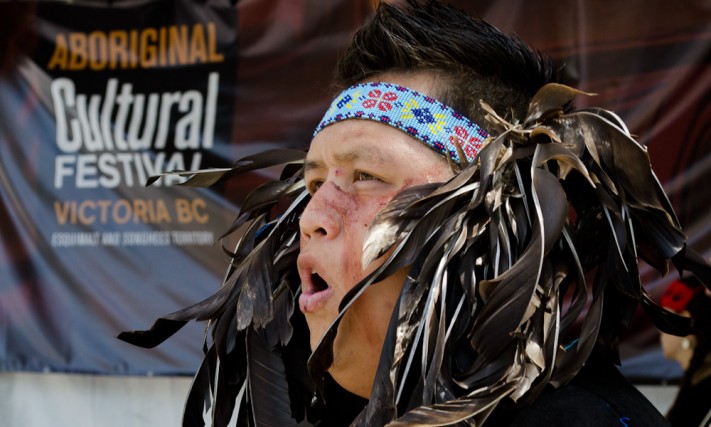 Gary Sam (Songhees Nation) / Photo by Don Enright
Gary Sam (Songhees Nation) / Photo by Don Enright
Victoria’s Aboriginal Cultural Festival is three days of food, singing, dancing, guided tours and artisan displays on the grounds of the Royal B.C. Museum. Each day honours one of the three major cultural groups that make up Vancouver Island’s First Nations: Friday is Coast Salish Nation Day, Saturday is Nuu-chah-nulth Nation Day, and Sunday is Kwakwaka’wakw Nation Day.
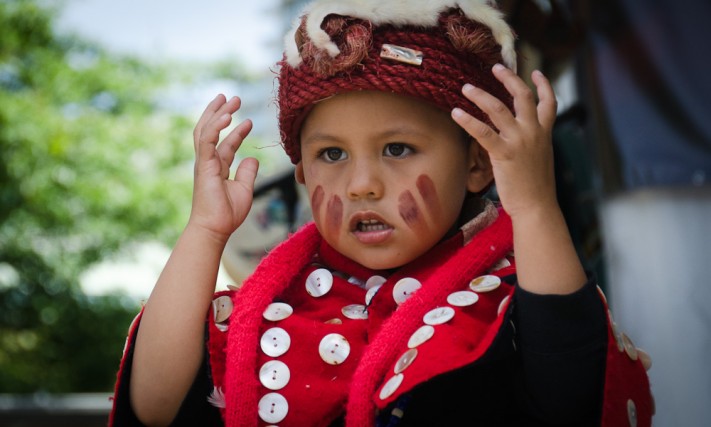 Le-la-la Dancers (Kawkwaka’wakw Nation) / Photo by Tom Ediger
Le-la-la Dancers (Kawkwaka’wakw Nation) / Photo by Tom Ediger
After taking in spectacular performances that feature traditional dance and singing, I make a point of attending Andy Everson’s walk among the house poles and mortuary poles of Thunderbird Park. He’s a performer and historian with a master’s degree in anthropology, and he points out the subtle interplay of symbols in the sculptures.
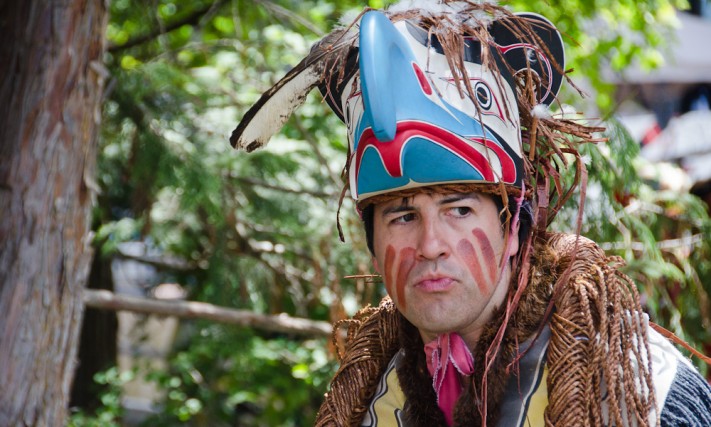 Andy Everson (Comox First Nation) / Photo by Don Enright
Andy Everson (Comox First Nation) / Photo by Don Enright
Later I meet one of B.C.’s premier carvers, Clarence Dick, and, after a tour through the Songhees Wellness Centre, he talks me through some of the technique behind the artistry. As we speak, one of his exquisite poles is being irrevocably altered by a woodpecker. (Clarence seems to take it in stride.)
I’m surprised at the number of young people here, dancing and drumming and selling their artwork. It reminds me of the South Pacific islands, where teens and young adults make up the bulk of traditional dance companies. Some of the dance groups here have an average age of about 24; contrast that with the UK and the rest of Europe: have you ever seen an English Morris dancer under 50?
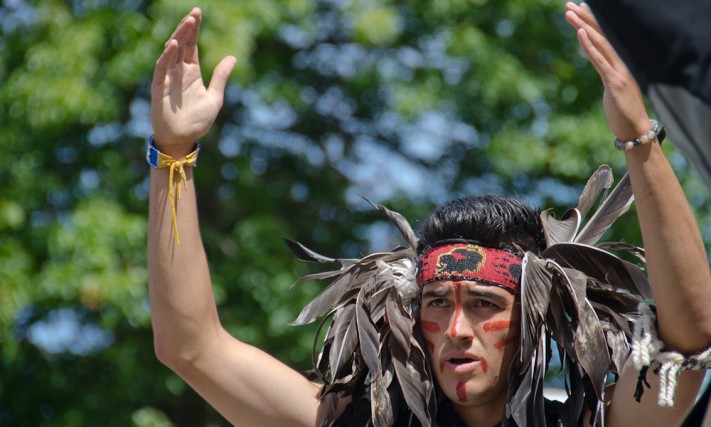 Devon Lepine (Songhees Nation) / Photo by Don Enright
Devon Lepine (Songhees Nation) / Photo by Don Enright
There seems to be a friendly competitive spirit among the dance troupes; they know each other and socialize together over the course of the festival. Some of them have come a long way to be here this weekend, and photos of dance performances decorate their Facebook pages as the festival progresses.
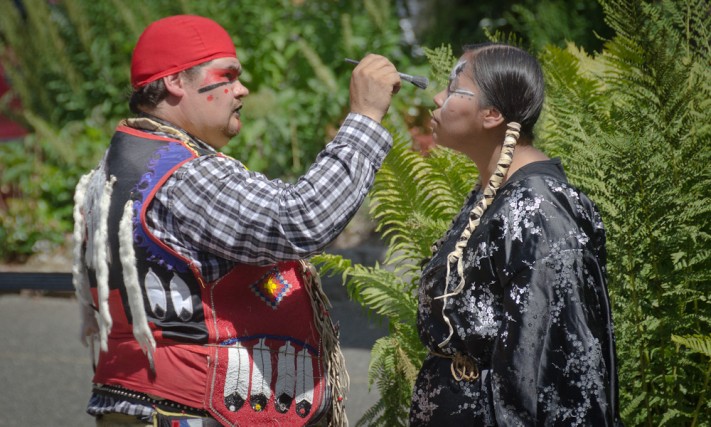 Dancers from Native Thunder Productions / Photo by Don Enright
Dancers from Native Thunder Productions / Photo by Don Enright
I sample salmon and bannock (so much bannock!) and eavesdrop among the crowd as I wander. The weather is glorious, in a West Coast way—about 14 degrees and sunny. A woman in colourful African dress greets the Aboriginal elders who sit chatting on a bench: “I am Zulu and I am here to pay you respect.”
The rest of the crowd is a lot less formal, a typical summer mix of locals, American tourists and a smattering of people from across Canada, vacationing with their families in one of the nation’s most beautiful cities.
I thought I knew downtown Victoria; I lived there for three years. But as historian Mark Albany takes me along the waterfront, I see it through First Nations’ eyes: the clam beds that still live in front of the Empress; the muddy flats here and there that, historically, were perfect for beaching canoes.
These were life-sustaining resources for the Esquimalt and Songhees peoples, and were among the first to be taken away with the arrival of Europeans so many years ago. I am shown the remains of creek beds and campsites, where, for centuries and longer, First Nations from all over Vancouver Island would stay as they did business with each other.
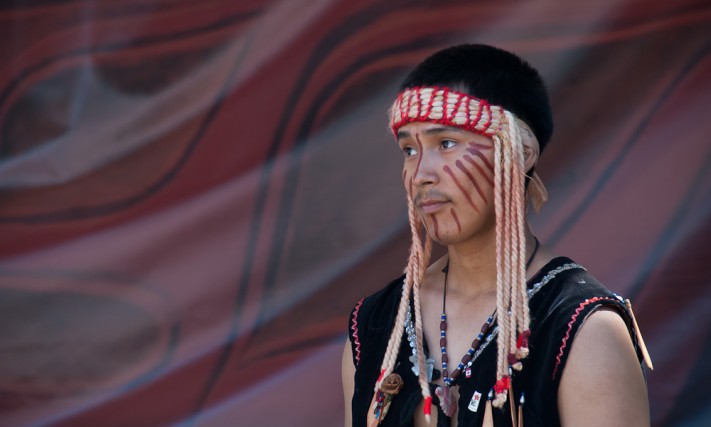 Marcus Goldsmith (Esquimalt Nation) / Photo by Tom Ediger
Marcus Goldsmith (Esquimalt Nation) / Photo by Tom Ediger
Victoria was a big trading hub, and became one of the major centres of transmission for smallpox and other European-borne epidemics. Mark tells these stories without bitterness: they’re simply facts, realities that have shaped their modern world.
Later I meet Leslie McGarry who guides me through some of the First Nations art collection at Swan’s Hotel and Brewpub downtown. Her own cultural roots run deep here on the island, though her people came from a bit further north. Without fail, each speaker or performer from outside the region takes a moment to thank the Esquimalt and Songhees Nations, on whose traditional territory we are standing.
I meet dancers as young as three years old; they take their work pretty seriously. I stop to photograph Daniel Wells of Lil’wat as he applies the finishing touches to a boy’s makeup. He explains that not just anyone can wear it; young Quyiyxis had to earn the right through fasting.
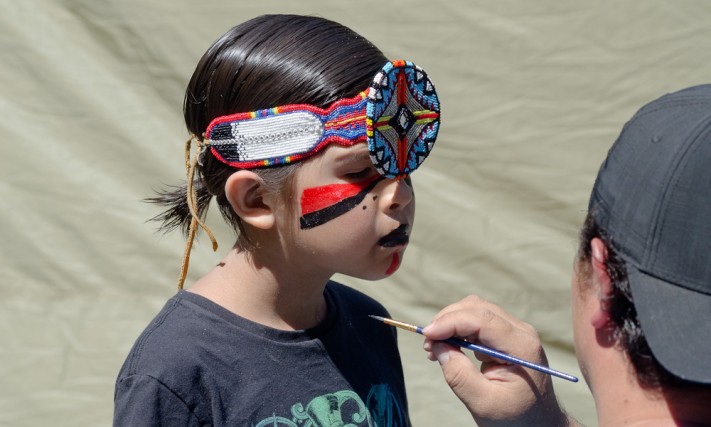 Young Quyiyxis & Daniel Wells (Lil’wat First Nations) / Photo by Don Enright
Young Quyiyxis & Daniel Wells (Lil’wat First Nations) / Photo by Don Enright
I learn that in all these West Coast cultures, songs and dances and symbols are proprietary—they belong within families and must be gifted to you before you have the right to use them.
Despite the focus on traditions and history—the dances, the costumes, the stories—I sense little nostalgia among our hosts here. Aboriginal culture in Canada is alive; everyone speaks of it in the present, not past tense.
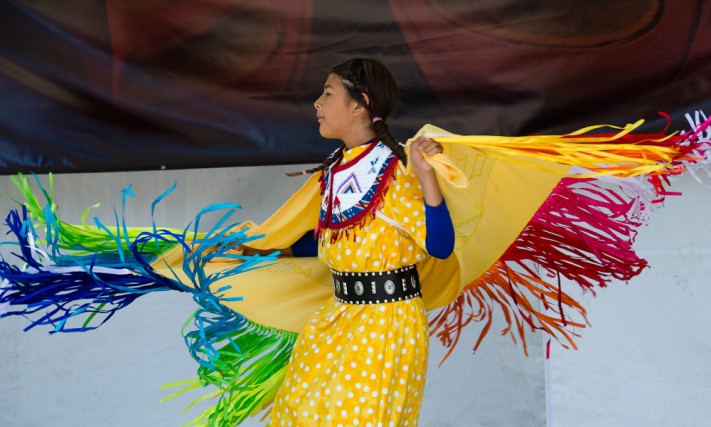 Native Thunder Productions (Li’lwat Nation) / Photo by Don Enright
Native Thunder Productions (Li’lwat Nation) / Photo by Don Enright
I leave the festival energized and optimistic. The drumbeats and the smiles stick with me. And as I catch the ferry back to Vancouver, emcee George Taylor’s words ring in my ears: “Never forget—we all have a culture. We all have stories.” I’m honoured that these singers, dancers, elders and teachers have taken the time to share theirs with me.
*Curious to read more of Don Enright’s posts for Toque & Canoe? Check out Nova Scotia: A Love Story, Reeling with memories in Manitoba, and from Quebec, An icy “affaire de coeur.”

